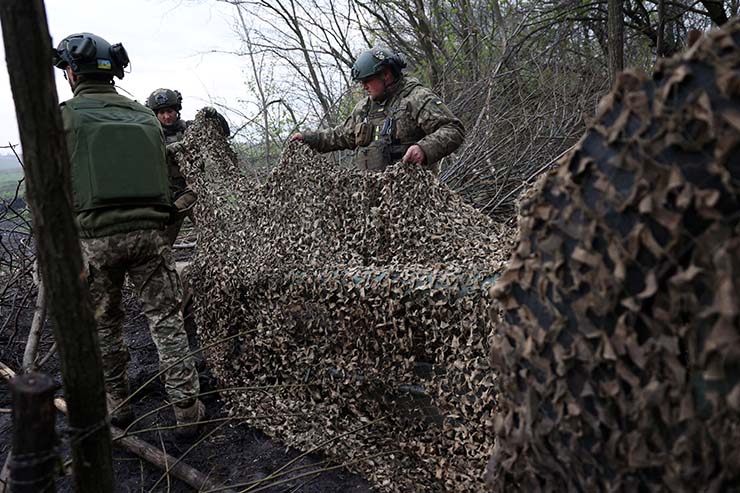
Milan: The French government’s military-procurement agency has placed an order for thousands of Saab multispectral camouflage nets designed to conceal troops formations’ electromagnetic signature on the battlefield.
The Direction Générale de l’Armement announced February 27 that it has ordered 3,000 multispectral Barracuda camouflage nets from the Stockholm-based defence company. “Saab’s subcontractor, the French SME Solarmtex, based in Vierzon, France, will carry out their manufacturing and assembly,” the release said. The order is valued at $21.6 million and the nets are expected to be delivered between 2024 and 2026 to the French Army and the Air and Space Force.
According to a DGA release, the mesh will enhance the discretion of brigade, combined arms and vehicle battle groups as well as other sensitive targets by masking their visible, infrared and radar signatures. Detection by way of electromagnetic emissions, and subsequent targeting, is a constant danger faced by Ukrainian forces in their defence against Russia.
Saab’s nets are the culmination of a two-year development program between the company, DGA and the Technical Section of the Army (STAT) to meet the French forces’ requirements. In September, the Swedish company said it had integrated its Barracuda camouflage net with a new feature that would change how troops communicate by allowing selected radio-frequencies to pass through the mesh.
“It is integrated with material that acts as a low-pass filter, allowing the selected radio-frequencies of their choice to pass either way through the camouflage screen while also protecting soldiers against higher ones of electromagnetic waves used by radar systems,” Johan Jersblad, senior development engineering at Saab told reporters during online briefing.
At the time, the Ultra-Lightweight Camouflage Screen-Frequency Selected Surface (ULCAS-FSS) was not yet in service, as it was only unveiled at the 2023 DSEI defence exhibition in London. The intention was to eventually mass-produce it in Sweden.














